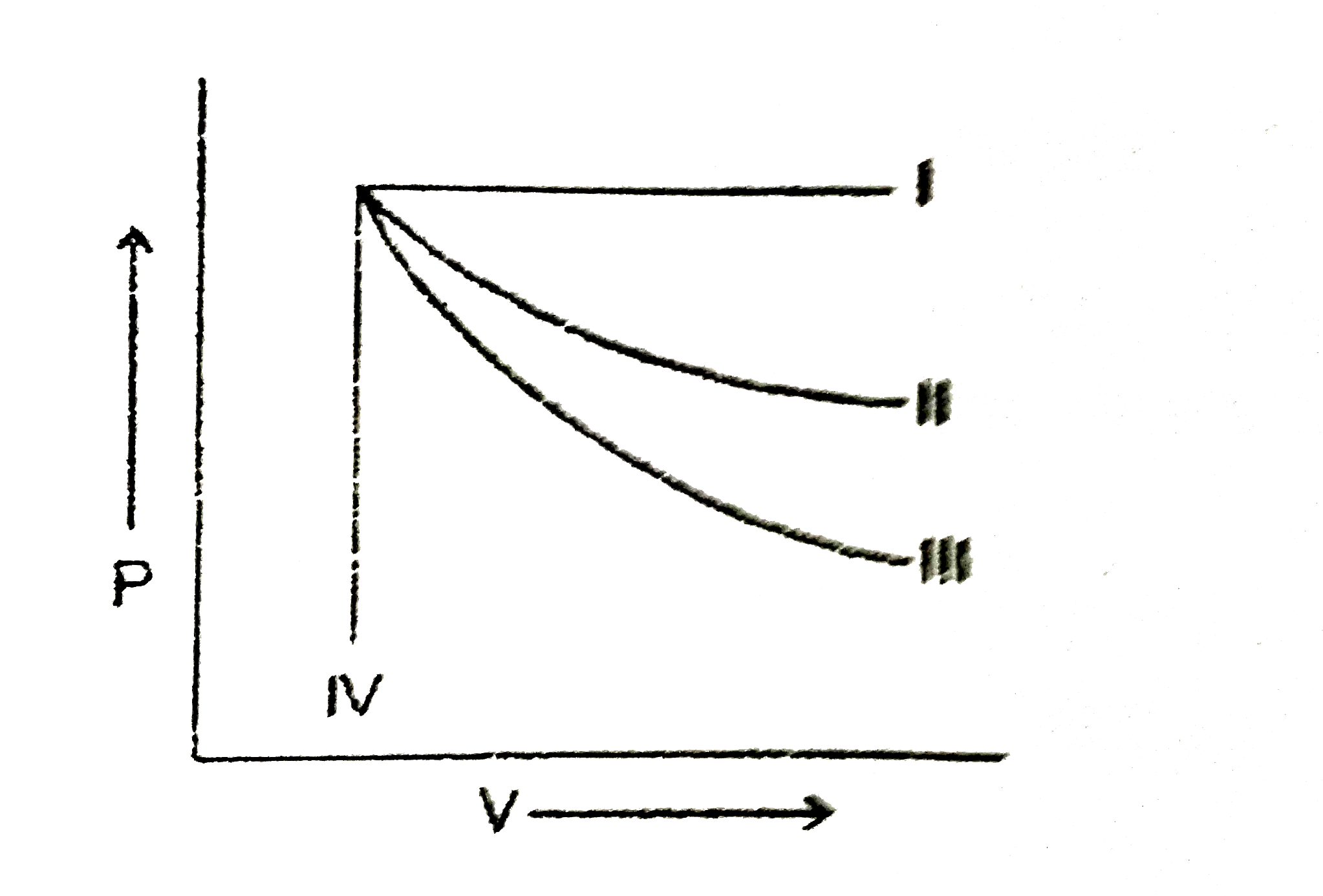For an isobaric process, ΔP=0.
To solve the question regarding an isobaric process where ΔP=0, we can break it down into the following steps:
1. Understand the Term "Isobaric":
- The term "isobaric" comes from the Greek prefix "iso-" meaning "same" and "baric" which relates to pressure. Therefore, an isobaric process is one that occurs at constant pressure.
2. Define the Change in Pressure (ΔP):
- The change in pressure is defined as:
ΔP=Pf−Pi
where Pf is the final pressure and Pi is the initial pressure.
3. Set Initial and Final Pressures Equal:
- Since the process is isobaric, the initial pressure Pi and the final pressure Pf must be equal:
Pf=Pi
4. Substitute into the Change in Pressure Equation:
- Substitute Pf with Pi in the equation for ΔP:
ΔP=Pi−Pi
5. Calculate ΔP:
- Simplifying the equation gives:
ΔP=0
6. Conclusion:
- Therefore, for an isobaric process, it is indeed true that ΔP=0.
Final Statement:
For an isobaric process, the change in pressure (ΔP) is zero, confirming that the process occurs at constant pressure.
- The term "isobaric" comes from the Greek prefix "iso-" meaning "same" and "baric" which relates to pressure. Therefore, an isobaric process is one that occurs at constant pressure.
- The change in pressure is defined as:
ΔP=Pf−Pi
where Pf is the final pressure and Pi is the initial pressure.
- Since the process is isobaric, the initial pressure Pi and the final pressure Pf must be equal:
Pf=Pi
- Substitute Pf with Pi in the equation for ΔP:
ΔP=Pi−Pi
- Simplifying the equation gives:
ΔP=0
- Therefore, for an isobaric process, it is indeed true that ΔP=0.
For an isobaric process, the change in pressure (ΔP) is zero, confirming that the process occurs at constant pressure.
Topper's Solved these Questions
- CHEMICAL THERMODYNAMICS BOOK - ICSECHAPTER - CHEMICAL THERMODYNAMICS EXERCISE - FILL IN THE BLANKS. TYPE QUESTIONS
20 Videos
- CHEMICAL THERMODYNAMICS BOOK - ICSECHAPTER - CHEMICAL THERMODYNAMICS EXERCISE - ASSERTION -REASON TYPE QUESTIONS
9 Videos
- CHEMICAL THERMODYNAMICS BOOK - ICSECHAPTER - CHEMICAL THERMODYNAMICS EXERCISE - OBJECTIVE (MULTIPLE CHOCE) TYPE QUESTIONS
59 Videos
- CHEMICAL BONDING AND MOLECULAR STRUCTUREBOOK - ICSECHAPTER - CHEMICAL BONDING AND MOLECULAR STRUCTUREEXERCISE - NCERT TEXT-BOOK EXERCISES ( WITH HINTS AND SOLUTIONS)
47 Videos
- CLASSIFICATION OF ELEMENTS AND PERIODICITY IN PROPERTIESBOOK - ICSECHAPTER - CLASSIFICATION OF ELEMENTS AND PERIODICITY IN PROPERTIESEXERCISE - NCERT TEXT-BOOK. EXERCISE (With Hints and Solutions)
63 Videos
Similar Questions
Knowledge Check
Slope of PV and V for an isobaric process will be
A−1BzeroC+1Dn R T
In an isobaric process, when temperature changes from T1 to T2,ΔS is equal to
View SolutionDraw at P-T curve for isobaric process.
View SolutionDraw at P-T curve for isobaric process.
View Solution
The plots between P and V which represent isochoric and isobaric process respectively:
View SolutionIn an isobaric process, the ratio of heat supplied to the system (dQ) and work done by the system (dW) for diatomic gas is
View SolutionIn an isobaric process, heat is supplied to a monoatomic ideal gas. The fraction of heat that goes itno mechanical work is
View SolutionAn ideal gas undergoes an isobaric process. If its heat capacity is C, at constant volume and number of mole n, then the ratio of work done by gas to heat given to gas when temperature of gas changes by ΔT is :
View Solution
